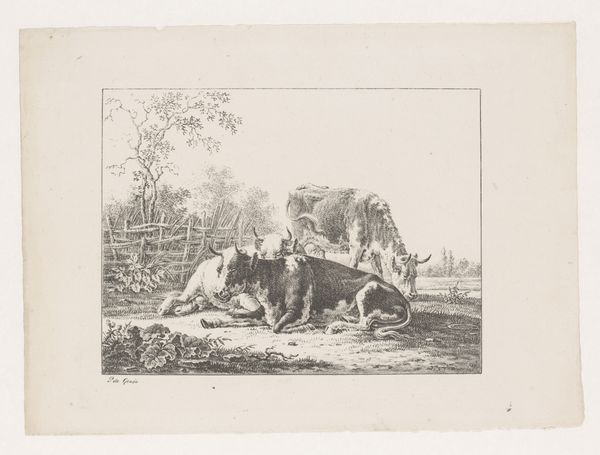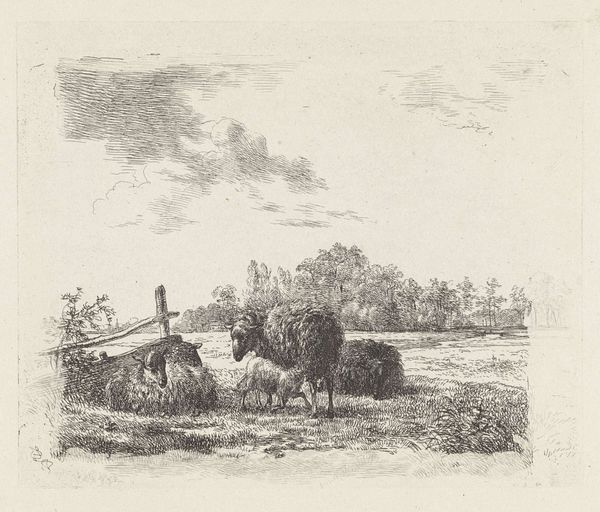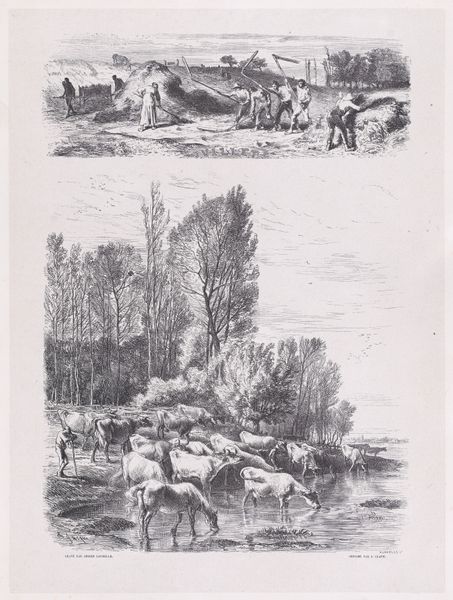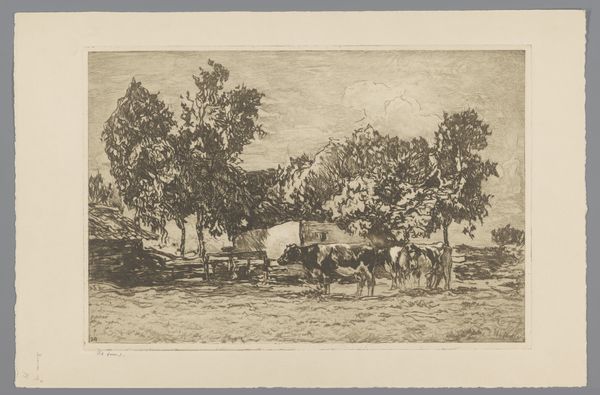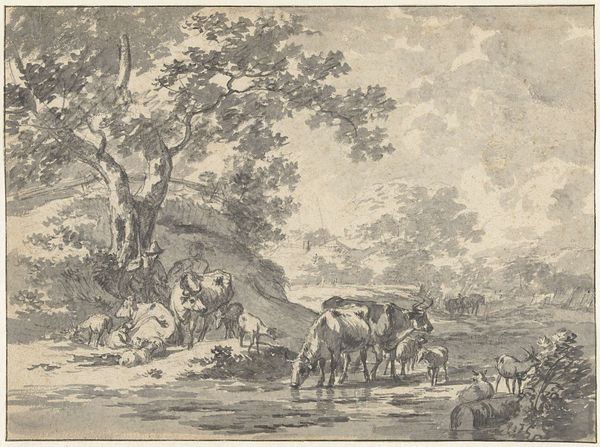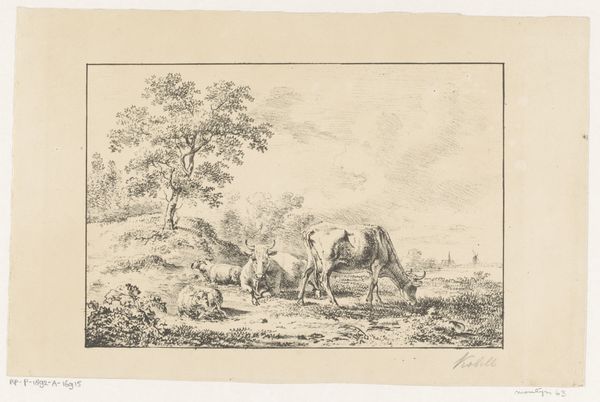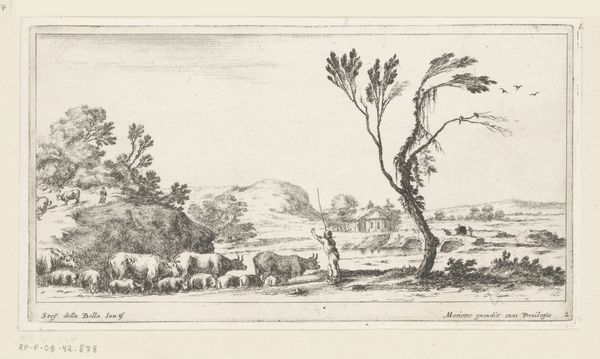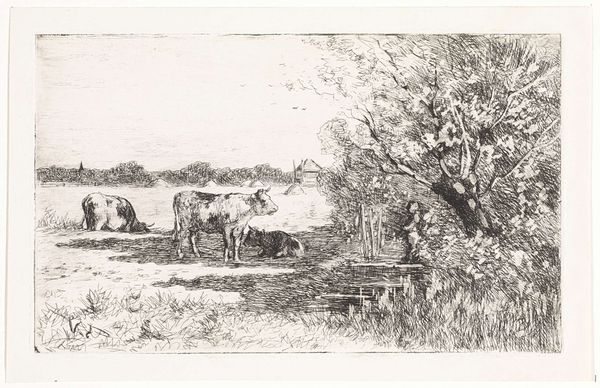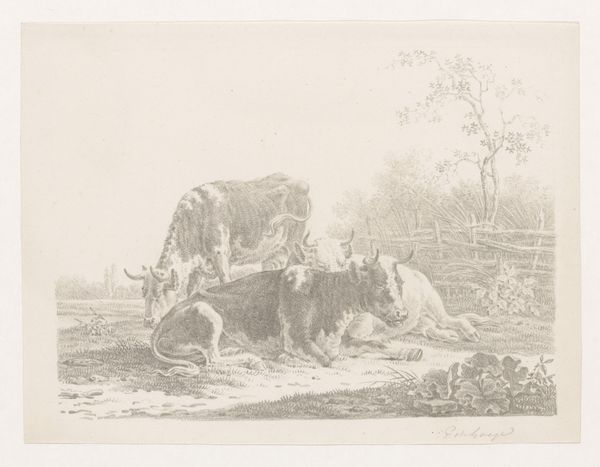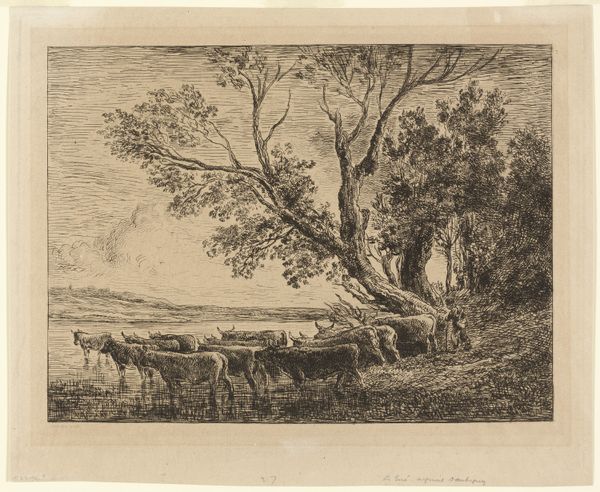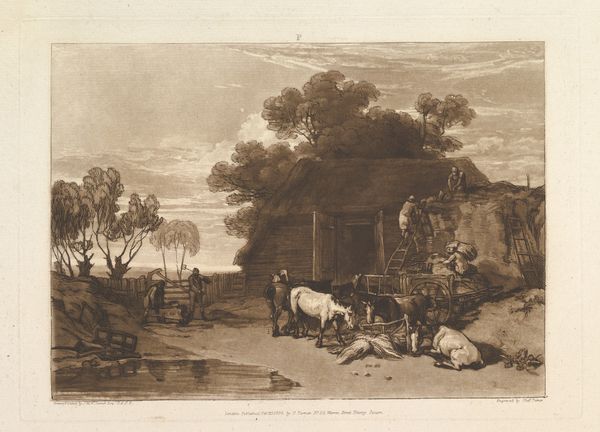
drawing, print, etching
#
drawing
# print
#
etching
#
landscape
#
figuration
#
line
#
genre-painting
#
realism
Dimensions: Sheet: 13 9/16 × 13 9/16 in. (34.5 × 34.5 cm) Plate: 4 3/4 × 7 1/16 in. (12 × 18 cm)
Copyright: Public Domain
Curator: Here we have Charles Jacque’s “Winter,” an etching from 1864. It depicts a rural scene, currently held at the Metropolitan Museum of Art. Editor: My immediate reaction is one of stillness, almost a muted harmony despite the evident busyness of the composition. There’s a textural quality in the lines that hints at the cold, damp air of a winter’s day. Curator: That textural quality you mention is central to understanding Jacque's process. Etching allowed for the mass production of imagery, bringing scenes of rural labor and everyday life to a broader audience. How do you think the medium itself shapes our perception of the depicted winter? Editor: It is true the medium dictates the way we see it, the starkness of the line emphasizes the bareness of winter, doesn't it? Notice the layering—it gives a remarkable depth and invites contemplation. Curator: Exactly. The economic realities of art production in mid-19th century France significantly influenced Jacque's choices. Consider his subject matter – a shepherd with his flock, a peasant woman guiding oxen. It's a reflection of the prevailing social order. These works helped romanticize labor and agrarian life amidst the rise of industrial capitalism. Editor: But is there not an element of idealization at play here? Despite what the scene might literally represent, the harmony of the work relies heavily on its composition, specifically the contrasting interplay between the dark, dense area near the herd and the more open, brighter background with the oxen and shepherd. It produces balance within a complex setting. Curator: I see your point about idealization, but it’s intertwined with the artist's experience, surely. It comes down to the socioeconomic factors, that enabled this piece. For Charles Jacque, there was a ready market for landscapes and rural life depictions for city dwellers interested in these themes. Editor: Well, regardless of how we got here, this piece allows for different viewpoints. From lines to materials to socioeconomic circumstances surrounding its production, this artwork yields a richness of details and offers multiple interpretations, doesn't it? Curator: Indeed. “Winter” invites us to ponder the relationship between art, labor, and our evolving perception of the natural world and social hierarchy.
Comments
No comments
Be the first to comment and join the conversation on the ultimate creative platform.


